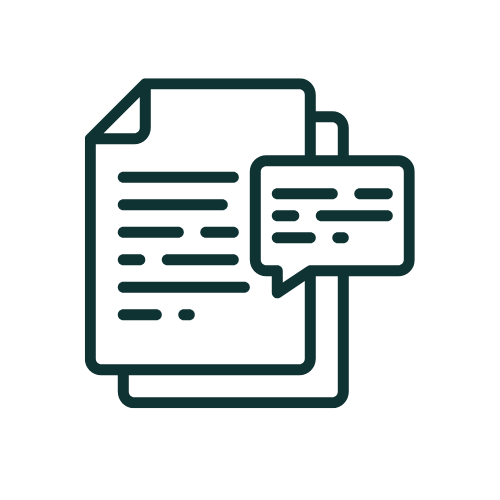- Services
- Discovery & Intelligence Services
- Publication Support Services
- Sample Work
Publication Support Service
- Editing & Translation
-
Editing and Translation Services
- Sample Work
Editing and Translation Service
-
- Research Services
- Sample Work
Research Services
- Physician Writing
- Sample Work
Physician Writing Service
- Statistical Analyses
- Sample Work
Statistical Analyses
- Data Collection
- AI and ML Services
- Medical Writing
- Sample Work
Medical Writing
- Research Impact
- Sample Work
Research Impact
- Medical & Scientific Communication
- Medico Legal Services
- Educational Content
- Industries
- Subjects
- About Us
- Academy
- Insights
- Get in Touch
- Services
- Discovery & Intelligence Services
- Publication Support Services
- Sample Work
Publication Support Service
- Editing & Translation
-
Editing and Translation Services
- Sample Work
Editing and Translation Service
-
- Research Services
- Sample Work
Research Services
- Physician Writing
- Sample Work
Physician Writing Service
- Statistical Analyses
- Sample Work
Statistical Analyses
- Data Collection
- AI and ML Services
- Medical Writing
- Sample Work
Medical Writing
- Research Impact
- Sample Work
Research Impact
- Medical & Scientific Communication
- Medico Legal Services
- Educational Content
- Industries
- Subjects
- About Us
- Academy
- Insights
- Get in Touch

- Services
- Discovery & Intelligence Services
- Publication Support Services
- Sample Work
Publication Support Service
- Editing & Translation
-
Editing and Translation Services
- Sample Work
Editing and Translation Service
-
- Research Services
- Sample Work
Research Services
- Physician Writing
- Sample Work
Physician Writing Service
- Statistical Analyses
- Sample Work
Statistical Analyses
- Data Collection
- AI and ML Services
- Medical Writing
- Sample Work
Medical Writing
- Research Impact
- Sample Work
Research Impact
- Medical & Scientific Communication
- Medico Legal Services
- Educational Content
- Industries
- Subjects
- About Us
- Academy
- Insights
- Get in Touch

A Complete Overview of HIPAA Compliance
- Home
- Publication Support
- Journal Selection
- A Complete Overview of HIPAA Compliance
An Academy Guide
Interesting topics


A Complete Overview of HIPAA Compliance
In 1996, the U.S. federal law called the Health Insurance Portability and Accountability Act (HIPAA) was passed. Its purpose was to set national standards for protecting Protected Health Information (PHI). This law covers healthcare providers, health plans, and health economics health care clearinghouses (generally referred to as covered entities) and their business associates. [1]

1. HIPAA Privacy Rule
The Privacy Rule standards govern the use and disclosure of individuals’ protected health information by covered entities subject to the Rule.
The Privacy Rule contains standards for the rights of individuals to understand and control how their health information is used. It protects individual health information while allowing perpetrators access to health information to provide high-quality health care and protect the community’s health. The Privacy Rule allows important utilizarion of information while protecting the privacy of individuals who seek care and healing. [2]

2. HIPAA Security Rule
While the HIPAA Privacy Rule protects PHI, the Security Rule protects a portion of information covered by the Privacy Rule. This portion is all individually identifiable health information that a covered entity creates, receives, maintains, or transmits electronically. This information is referred to as electronic protected health information, or e-PHI. The Security Rule does not cover PHI that is transmitted orally or in written form. [2]
3. Types Of HIPAA
The components of HIPAA comprise five titles to serve multiple purposes and address issues concerning patients and healthcare workers. [3]
Title I – Health Care Access, Portability, and Renewability
Title II – Preventing Health Fraud and Abuse; Administrative Simplification.
Title III – Tax-Related Health Provisions
Title IV – Application and Enforcement of Group Health Plan Requirements
Title V – Revenue Offsets
4. Why was HIPAA established?
- The statute aims to establish confidentiality systems within healthcare facilities and beyond.
- The primary goal of HIPAA is to protect the privacy of PHI. [4]
5. Whom does HIPAA cover?
All individuals working in healthcare facilities or private offices [4]
- Students
- Non-patient care employees
- Healthcare plans (e.g., insurance companies)
- Billing companies
- Electronic medical record companies
6. What are the main goals of HIPAA?
- To restrict the use of PHI to people with a need to know.
- To impose sanctions on anyone who does not adhere to confidentiality regulations. [4]
7. What types of health information are protected?
Any health information that includes an identifier pertaining to the individual (e.g., name, social security number, telephone number, email address, street address, and other personal identifiers).
8. Core Requirements for Compliance
| Administrative Safeguards | Physical Safeguards | Technical Safeguards |
|---|---|---|
|
|
|
9. Common HIPAA Violations
- Snooping on Healthcare Records [5]
- Failure to Conduct a Risk Assessment Organization-Wide.
- Failure to Manage Security Risks / Absence of Risk Management Process.
- Denying Patients Access to Health Records/Going over the Time Limits to Provide Access.
- Failure to Implement a HIPAA-Compliant Business Associate Agreement.
- Inadequate Controls for Access to ePHI.
- Failure to implement Encryption or Other Measure to Protect ePHI on Portable Devices.
- Failing to provide Notification of Breach within the 60-day Deadline.
- Unpermitted Disclosures of PHI.
- Inadequate Disposal of PHI.
Conclusion
HIPAA compliance is a legal regulation and setup to safeguard the trust of patients and the integrity of data. There are many professionals that have roles and responsibilities in the compliance process from healthcare providers to technology vendors, they all need robust policies, technical safeguards, and ethical practices. Anyone working in compliance and staying compliant on behalf of patients is contributing also to their security, transparency, and accountability in a data driven healthcare industry.
A Complete Overview of HIPAA Compliance? Our academic consultants are here to guide you. [Get Expert Publishing Support] or [Schedule a Free Consultation]
References
- CDC. (2024, September 10). Health insurance portability and accountability act of 1996 (HIPAA). Public Health Law. https://www.cdc.gov/phlp/php/resources/health-insurance-portability-and-accountability-act-of-1996-hipaa.html
- Moore, W., & Frye, S. (2019). Review of HIPAA, part 1: History, protected health information, and privacy and security rules. Journal of Nuclear Medicine Technology, 47(4), 269–272. https://doi.org/10.2967/jnmt.119.227819
- (2024, September 29). A complete overview of **HIPAA law** and compliance. Sprinto. https://sprinto.com/blog/hipaa-law/
- Edemekong PF, Annamaraju P, Afzal M, et al. Health Insurance Portability and Accountability Act (HIPAA) Compliance. [Updated 2024 Nov 24]. In: StatPearls [Internet]. Treasure Island (FL): StatPearls Publishing; 2025 Jan-. Available from: https://www.ncbi.nlm.nih.gov/books/NBK500019/
- (N.d.). Hipaajournal.com. Retrieved August 1, 2025, from https://www.hipaajournal.com/common-hipaa-violations/







